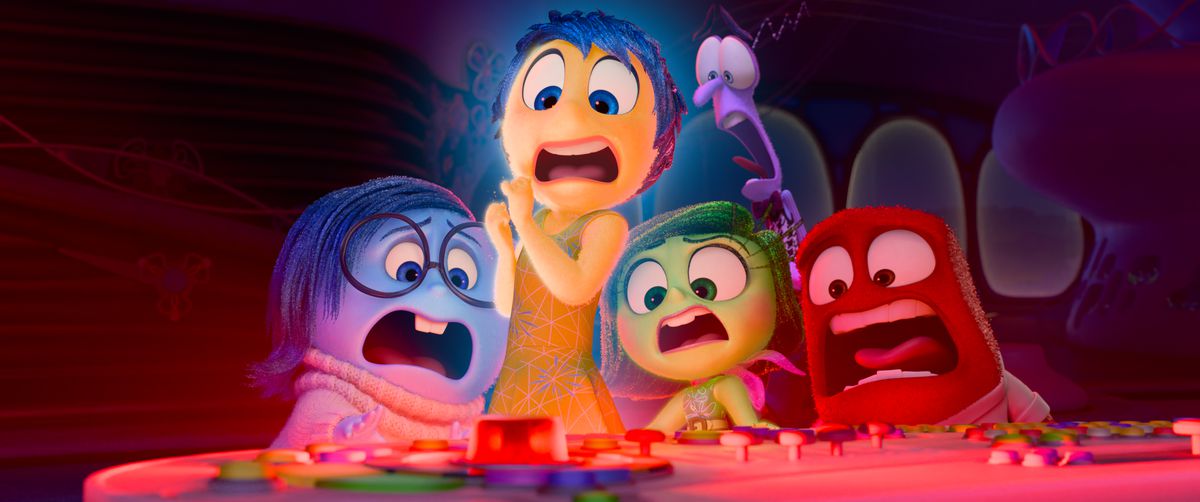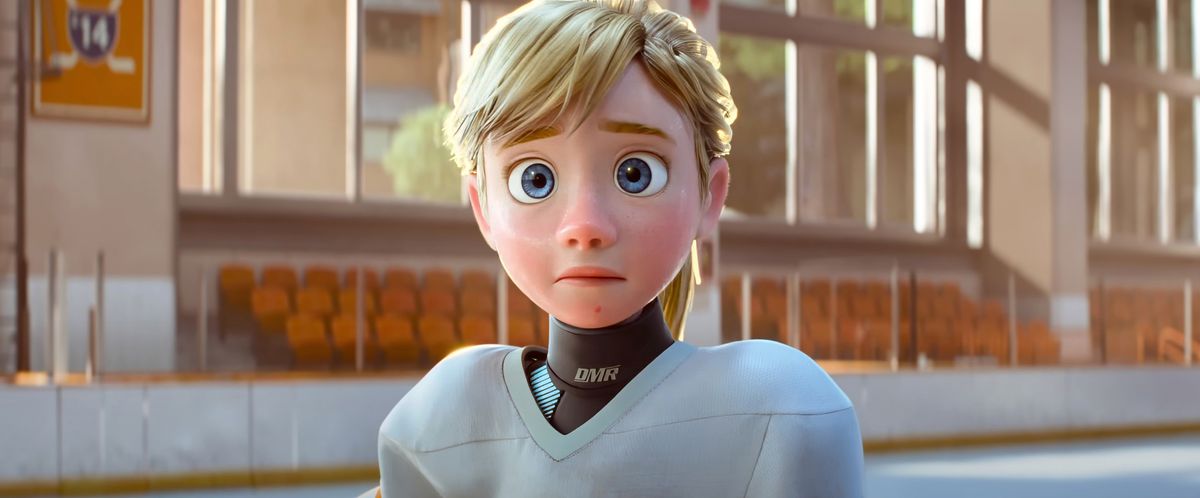Inside Out 2 revives the old Pixar magic
The problem with repeating a film as perfectly complete as Pete Docter’s 2015 Pixar film Inside out is that a neatly closed narrative loop doesn’t leave many obvious next steps for the story. Inside out is half a world-building exercise in establishing an extended visual metaphor and testing its flexibility, a semi-coming-of-age story about an eleven-year-old going through a major life change. But the real point is that it reinforces to the audience that sadness – an element at the heart of Pixar’s best films – is not only an inescapable part of life, but also serves an important purpose. So what’s left for a sequel? Repeating that sadness still isn’t it all bad? Move down the character list to express the importance of anger and fear?
Inside out 2‘The game’s first trailers suggested the answer was: ‘Introduce a bunch of new characters’ historically risky gamble that probably seemed to complicate the setting without necessarily adding anything that was needed. And with Docter not helming the project, all the usual questions about whether the original film needed a sequel were compounded by reasonable concerns about whether a new director would actually get what the film would deliver. Inside out one of Pixar’s most moving and memorable films.
But Inside out 2 doesn’t fall into the usual traps of the sequel, piling on more of the same as the original, only bigger, louder, and with extra emphasis on what fans loved most vocally the first time around. It tells the story of in an authentic way Inside out‘s Riley Andersen, who gives her new problems to face both internally and externally, and finds clever ways to expand on the original film’s innovative metaphorical language.
Image: Disney/Pixar
There are new emotions, new puns in the mental landscape and new parts of Riley’s mind to explore, but the most important element is that her story feels believable – not just on a fantasy level, but as a moving and sometimes heartbreaking story about being a teenager. Director Kelsey Mann (Forward writer and Party Central Helmer) and his filmmaking team do so with surprising dexterity, making this sequel Pixar’s most emotionally powerful film of the past fifteen years.
Inside out 2 is reunited at the age of 13 with Riley (Kensington Tallman), who is about to drop out of high school with her best friends and hockey teammates Grace (Grace Lu) and Bree (Sumayyah Nuriddin-Green). Riley hopes they all make the high school team so they can continue playing together. The first five emotions from the first film – Joy (Amy Poehler), Sadness (Phyllis Smith), Anger (Lewis Black), Disgust (Liza Lapira, replacing Mindy Kaling) and Fear (Tony Hale, replacing Bill Hader) – have found a solid, cooperative balance in Riley’s mind. The bossy, controlling Joy has learned to give space to Sadness and the others, and they all work collegially to express Riley’s reaction to the world.
But when Riley finds out she’s been assigned to a different high school than Grace and Bree—and enters puberty at the same time—a new set of emotions takes over: fear (Maya Hawke), envy (Ayo Edebiri), boredom . (Adèle Exarchopoulos) and shame (Paul Walter Hauser).

Image: Disney/Pixar
The fact that Joy absorbed its lessons Inside out so thorough that she initially welcomes these obnoxious-sounding newcomers is just one of countless little grace notes that make the transition from original to sequel feel seamless – and wryly funny at the same time. The writers (Mann, Inside out co-writer Meg LeFauve and Dave Holstein) know exactly what the audience expects the arrival of fear in a teenage girl’s brain will do to her poise, and by keeping Joy and the others cheerfully naive about the threat, tension builds early on , at least for adult viewers.
The ensuing chaos follows a common path for recent Disney and Pixar films: there’s no villain here exactly, just selfish intentions, fear disguised as love, and fear that lives up to its name. But that’s enough to market a fairly hectic action film full of major conflicts and minor comedic elements.
Inside out 2 raises the exact same questions that the first film raised, and skims through them in exactly the same way: are all these emotional characters the driving force behind Riley, or do they respond to and reflect her experiences and needs? Like the first film, the metaphor falls apart if you look at it too closely, or if you read it as a literal text, with a limp orange Muppet creature living in this teen’s brain able to drive her into an otherwise unwarranted panic attack . by pressing too many buttons on a console. The broad message, that emotions can be messy, contradictory, complicated and contradictory, comes across clearly enough, but reads most convincingly when you accept the reality of Riley’s external experience, rather than demanding that you carefully examine the details of her internal architecture. is reading. works.

Image: Disney/Pixar via Everett Collection
But Inside out 2 makes that easy enough for all but the most determined advocates. It’s a manic film, constantly rushing from one visual pun and one dramatic confrontation to another, but the architecture, in which Riley must decide what’s important to her and who she wants to be, is not only solid and thoughtful, she is also constructed. with real empathy. Like To blushanother recent Pixar film that puts a symbolic face on a teenage girl’s physical and emotional experience, Inside out 2 is full of passion and empathy, introducing audiences to Riley’s inner struggle without always portraying her as the hero, even in her own story.
The details of that conflict will land better for some viewers than others. Riley’s attempts to determine whether she should stick with her best friends or cling to the friendliness of the cool-girl hockey champion at her new school raises a number of logistical questions that have nothing to do with the mind-body interface. (Why does hockey team captain Val Ortiz (Lilimar) support a random, awkward high school student so endlessly that she’s willing to alienate her own best friends just to hang out with Riley during every moment of hockey camp?)
But like the best Pixar films, Inside out 2 makes real emotions palpable and painful in ways that go beyond most kid-friendly animated films. Riley’s fear and desire to be liked, her guilt over her interactions with her friends, her fears about the future and not being good enough for the team – they all play out vividly on her face, not just in the complicated, characterful, symbolic world in her head. If anything, in this sequel she feels like more of a real, developed person than she did in most of the film Inside out, until the film’s memorable finale. As her inner world becomes more complicated, so does her outer world. (And vice versa.)
Pixar purists certainly have a right to have some concerns about how the studio has been dealing with sequels and franchises lately, and how many of the more recent originals lacked the old emotional magic that gave the studio its reputation and a stream of indelible , memorable hits. But Inside out 2 is a good sign that the company is returning to its core strengths. It’s a sequel to a film that didn’t ask for one, and an expansion of a setting that derived much of its initial power from the simplicity of its premise: five emotions locked in conflict over an unprecedented new challenge. But the new film earns its place in the Pixar pantheon with its creativity, craftsmanship, and heartfelt writing. It’s almost enough to make Inside Out 3: The student days seems like a promising pitch to me.
Inside out 2 is in theaters now.
